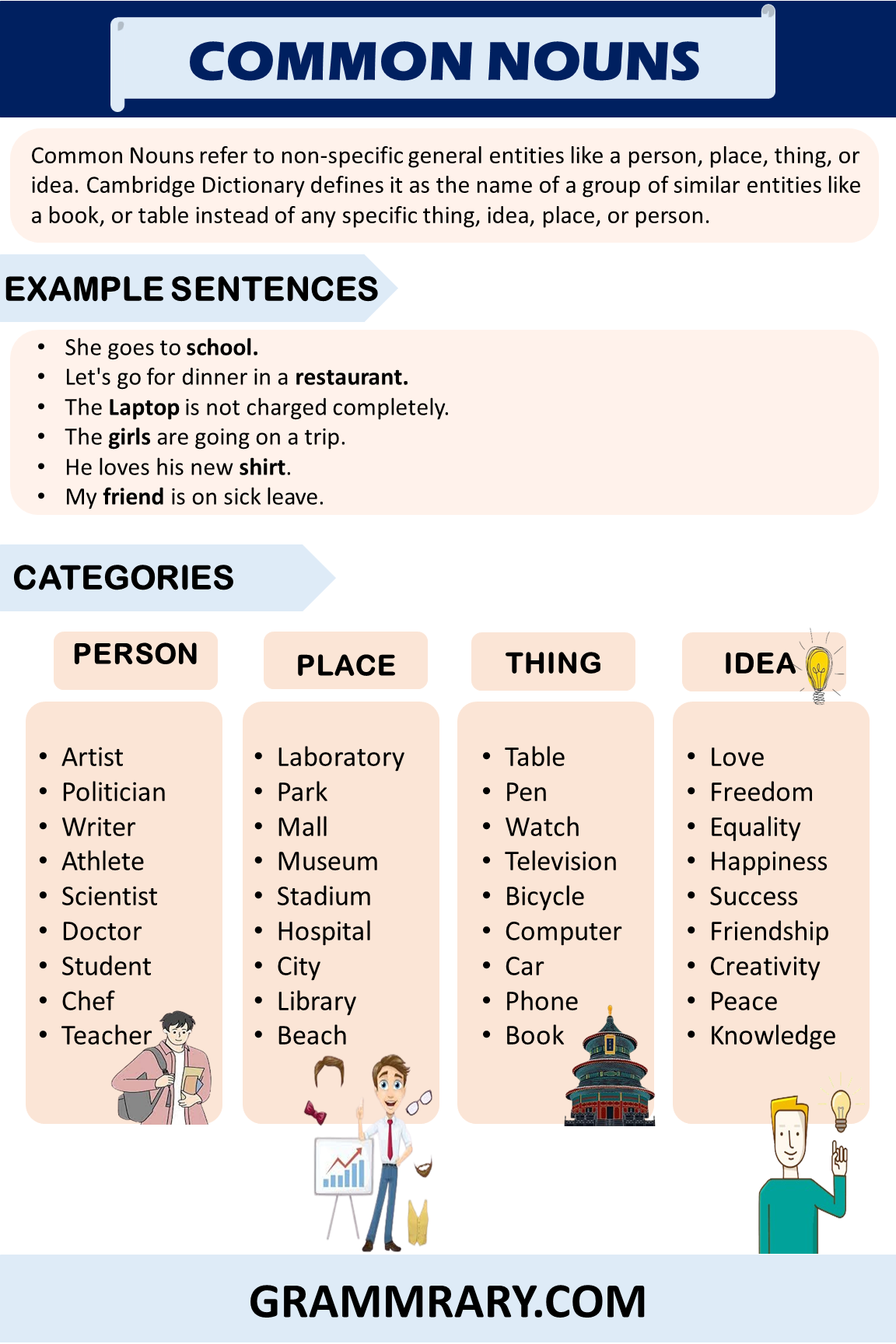Nouns are an essential part of any language, including English. They are words that are used to name people, places, things, or ideas. Nouns can be singular or plural, and they can also be common or proper. Understanding the different types of nouns and how to use them correctly is crucial for effective communication.
When you are writing or speaking, nouns help to provide clarity and specificity to your sentences. Without nouns, it would be challenging to convey information accurately. By learning about nouns and practicing using them in sentences, you can improve your language skills and become a more effective communicator.
What is a Noun? Examples
Nouns can be categorized into several different types, including:
- Common Nouns: These are general names for people, places, things, or ideas. Examples include: dog, city, book, and happiness.
- Proper Nouns: These are specific names for people, places, or things and are always capitalized. Examples include: John, Paris, Coca-Cola, and Christmas.
- Concrete Nouns: These are tangible objects that can be perceived through the senses. Examples include: table, car, flower, and music.
- Abstract Nouns: These are ideas, concepts, or qualities that cannot be physically seen or touched. Examples include: love, democracy, freedom, and honesty.
- Collective Nouns: These are used to refer to groups of people, animals, or things. Examples include: team, flock, herd, and family.
By understanding the different types of nouns and practicing using them in sentences, you can improve your writing and communication skills. Nouns are the building blocks of language and play a crucial role in conveying meaning effectively.
When you are writing, pay attention to the nouns you use and make sure they are appropriate for the context. Using a variety of nouns can make your writing more engaging and descriptive. Practice identifying nouns in sentences and try to use them creatively to enhance your communication skills.
In conclusion, nouns are essential elements of language that help to give meaning and specificity to our words. By learning about the different types of nouns and how to use them effectively, you can improve your writing and communication skills. Practice using nouns in sentences and pay attention to the nuances of each type to become a more proficient communicator.
